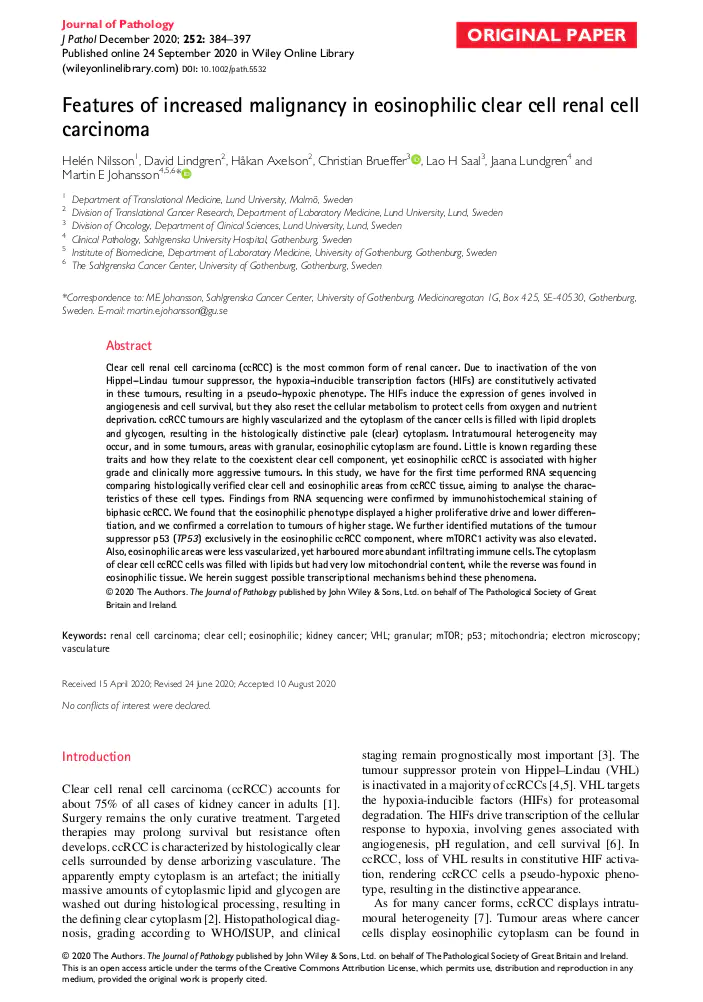
Abstract
Clear cell renal cell carcinoma (ccRCC) is the most common form of renal cancer. Due to inactivation of the von Hippel–Lindau tumour suppressor, the hypoxia‐inducible transcription factors (HIFs) are constitutively activated in these tumours, resulting in a pseudo‐hypoxic phenotype. The HIFs induce the expression of genes involved in angiogenesis and cell survival, but they also reset the cellular metabolism to protect cells from oxygen and nutrient deprivation. ccRCC tumours are highly vascularized and the cytoplasm of the cancer cells is filled with lipid droplets and glycogen, resulting in the histologically distinctive pale (clear) cytoplasm. Intratumoural heterogeneity may occur, and in some tumours, areas with granular, eosinophilic cytoplasm are found. Little is known regarding these traits and how they relate to the coexistent clear cell component, yet eosinophilic ccRCC is associated with higher grade and clinically more aggressive tumours. In this study, we have for the first time performed RNA sequencing comparing histologically verified clear cell and eosinophilic areas from ccRCC tissue, aiming to analyse the characteristics of these cell types. Findings from RNA sequencing were confirmed by immunohistochemical staining of biphasic ccRCC. We found that the eosinophilic phenotype displayed a higher proliferative drive and lower differentiation, and we confirmed a correlation to tumours of higher stage. We further identified mutations of the tumour suppressor p53 (TP53) exclusively in the eosinophilic ccRCC component, where mTORC1 activity was also elevated. Also, eosinophilic areas were less vascularized, yet harboured more abundant infiltrating immune cells. The cytoplasm of clear cell ccRCC cells was filled with lipids but had very low mitochondrial content, while the reverse was found in eosinophilic tissue. We herein suggest possible transcriptional mechanisms behind these phenomena.